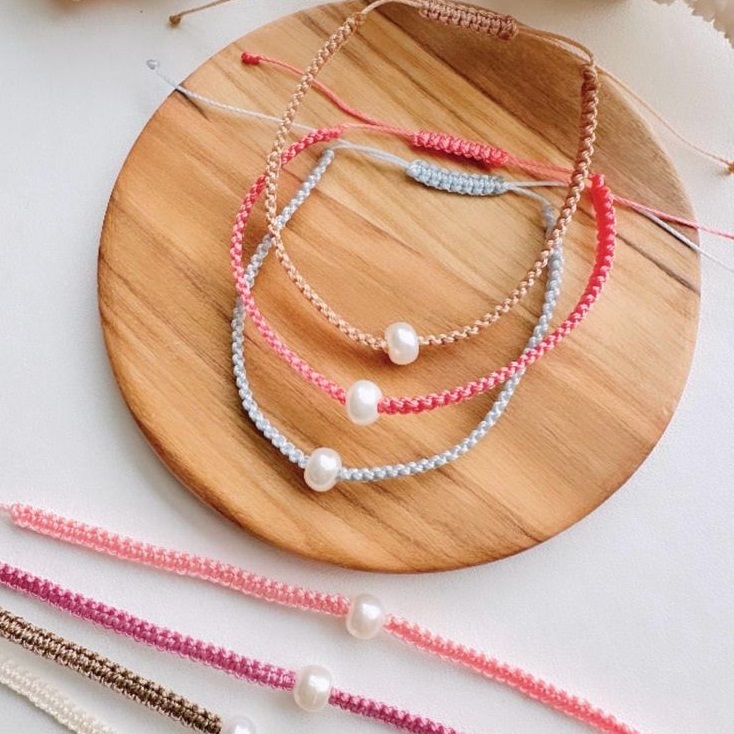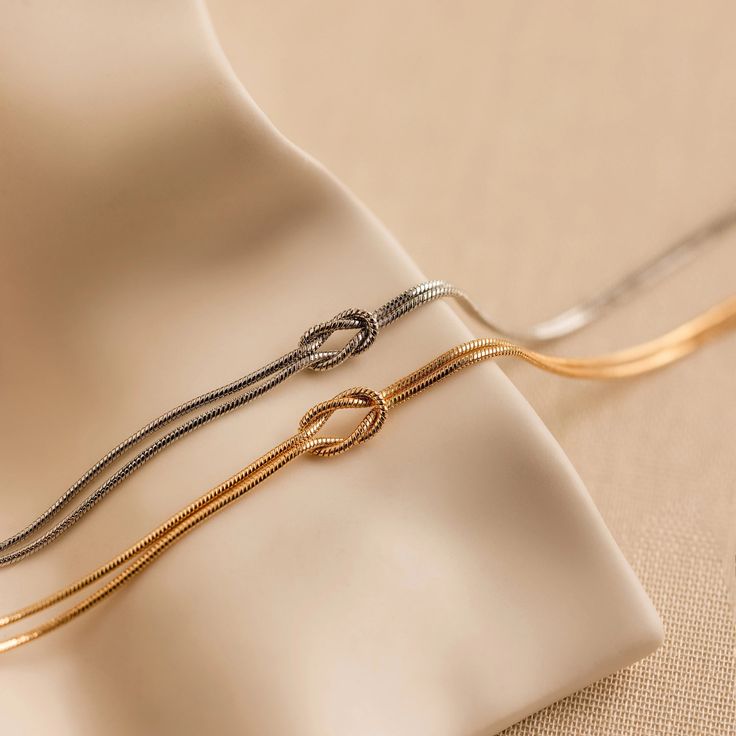Knot bracelets, with their simple yet elegant designs, are a timeless accessory that can be enjoyed by crafters of all ages. Whether you’re a seasoned knot enthusiast or a complete beginner, learning how to make a knot bracelet opens up a world of creative possibilities. Let’s explore various knotting techniques, materials, and styling tips to help you craft beautiful and personalized bracelets that showcase your unique style.
Gathering Your Supplies: The Essentials
Before you embark on your knot-tying adventure, gather the necessary tools and materials to ensure a smooth and successful crafting experience.
-
Cord or Rope: The foundation of your bracelet lies in the cord or rope you choose. Popular options include:
- Hemp cord: Durable and natural, hemp cord comes in various thicknesses and colors, offering a rustic and earthy aesthetic.
- Macrame cord: This soft and pliable cord is ideal for intricate knotting and creating delicate patterns.
- Paracord: This strong and versatile cord, originally used for parachutes, offers durability and a range of color options.
- Leather cord: Leather cord adds a touch of sophistication and can be combined with other materials like beads or charms.
-
Scissors: Sharp scissors are essential for cutting the cord or rope to the desired length and trimming any loose ends.
-
Measuring Tape or Ruler: Use a measuring tape or ruler to measure your wrist circumference and ensure the bracelet fits comfortably.
-
Lighter or Fray Check (Optional): If using synthetic cords, a lighter or fray check can be used to seal the ends and prevent them from unraveling.
-
Beads or Charms (Optional): Add a touch of personality and flair to your bracelet with beads, charms, or other decorative elements.
Mastering the Knots: Essential Techniques
Let’s explore some fundamental knotting techniques that form the basis of many bracelet designs.
The Overhand Knot
The overhand knot is the simplest knot, serving as a building block for more complex patterns.
-
Create a Loop: Make a loop with the cord, leaving a tail end.
-
Pass Through: Pass the working end of the cord through the loop.
-
Pull Tight: Pull both ends of the cord to tighten the knot.
The Square Knot
The square knot, also known as the reef knot, is a versatile and secure knot often used in macrame and other crafting projects.
-
Cross the Cords: Hold two cords side-by-side. Cross the right cord over the left cord.
-
Loop and Under: Loop the right cord under the left cord and back over itself.
-
Cross Again: Cross the left cord over the right cord.
-
Loop and Through: Loop the left cord under the right cord and up through the loop created in step 2.
-
Pull Tight: Pull both ends of the cords to tighten the knot, ensuring it lies flat and symmetrical.
The Sliding Knot
The sliding knot is an adjustable knot that allows you to customize the fit of your bracelet.
-
Create a Loop: Make a loop with one cord, leaving a tail end.
-
Wrap and Thread: Wrap the other cord around the loop several times.
-
Thread Through: Thread the working end of the second cord through the loop.
-
Pull Tight: Pull both ends of the cords to tighten the knot and adjust the size of the loop.

Leveling Up: Intermediate Knots
Once you’ve mastered the basic knots, it’s time to elevate your knot bracelet game with some intermediate techniques. These knots add complexity and visual intrigue to your creations.
The Chinese Staircase Knot
This knot creates a beautiful spiral effect that resembles a staircase.
-
Prepare your cords: Cut four strands of cord to your desired length, ensuring they’re long enough to wrap comfortably around your wrist with some extra length for tying knots.
-
Secure the cords: Tie the four strands together at one end with an overhand knot. Secure the knotted end to a stable surface with tape or a clipboard.
-
Begin knotting: Number the strands from left to right: 1, 2, 3, 4. Take strand 4 and loop it over strand 3, then under strand 2, and finally over strand 1. Next, take strand 1 and loop it over strand 2, under strand 3, and over strand 4. Repeat this sequence, alternating between starting with strand 4 and strand 1, until you reach the desired length.
-
Secure the end: Tie another overhand knot at the end of the braid to secure it. Trim any excess cord.
-
Finishing touches: If desired, add a clasp or closure to the ends of the bracelet for a more polished look.
The Josephine Knot
This elegant knot adds a touch of sophistication to your bracelet.
-
Prepare your cords: Cut two strands of cord, one slightly longer than the other.
-
Create a Loop: Make a loop with the longer cord, leaving a tail end.
-
Wrap and Thread: Wrap the shorter cord around the loop several times, ensuring the wraps are tight and even.
-
Thread Through: Thread the working end of the shorter cord through the loop.
-
Pull Tight: Gently pull both ends of the cords to tighten the knot and adjust the size of the loop.
-
Repeat: Continue making Josephine knots along the length of the longer cord, spacing them as desired.
-
Secure the Ends: Tie knots at both ends of the bracelet and trim any excess cord.
Adding Flair: Beads and Charms
Elevate your knot bracelet by incorporating beads or charms into the design.
-
Bead Placement: You can add beads between knots, creating a pattern or design. Alternatively, you can attach beads or charms to the ends of the bracelet for a dangling effect.
-
Bead Selection: Choose beads that complement the color and style of your cord. You can use glass beads, wooden beads, metal beads, or even natural stones.
-
Secure Attachment: Ensure the beads or charms are securely attached to the cord. You can use knots, crimps, or jump rings to secure them in place.

Finishing Touches: Clasps and Closures
While some knot bracelets are designed to be tied on and off, adding a clasp or closure can enhance their functionality and ease of use.
-
Lobster Clasps: These classic clasps are easy to use and offer a secure closure.
-
Toggle Clasps: Toggle clasps add a decorative element to your bracelet and are also easy to operate.
-
Magnetic Clasps: Magnetic clasps offer a convenient and discreet closure option.
-
Sliding Knots: Create an adjustable bracelet with sliding knots, allowing you to customize the fit.
Choosing the Right Closure
-
Functionality: Consider how often you’ll be taking the bracelet on and off. A clasp or closure might be more convenient if you plan to wear it frequently.
-
Aesthetics: Choose a clasp or closure that complements the style of your bracelet and adds to its overall aesthetic appeal.
Beyond the Wrist: Exploring Other Knotted Creations
The knotting techniques you’ve learned for bracelet making can be applied to a variety of other creative projects.
-
Necklaces: Create stunning necklaces by stringing larger beads or combining different knots and textures. Add a pendant or charm for a personalized touch.
-
Anklets: Anklets adorned with delicate knots and beads can add a playful and bohemian flair to your summer looks.
-
Keychains: Craft unique and functional keychains using knotting techniques and colorful cords.
-
Home Decor: Incorporate knotting into home décor projects like wall hangings, plant hangers, or even decorative coasters.

Conclusion
Making a knot bracelet is a fulfilling and creative activity that allows you to express your personal style and create unique accessories. With a few basic knots and some practice, you can craft beautiful bracelets that you’ll be proud to wear or gift to loved ones.
Remember to choose high-quality materials, experiment with different knotting techniques, and incorporate personalized touches to make your bracelet truly special.


